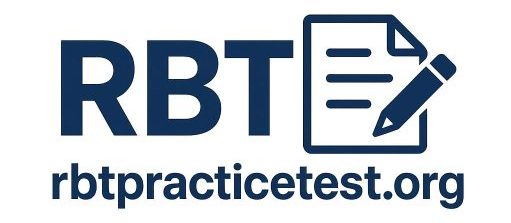In this RBT Exam Study Guide, we focus on Assessment, as outlined in Section B of the RBT Task List. It covers three core tasks that RBTs must understand and assist with in Applied Behavior Analysis (ABA):
- Conducting preference assessments
- Assisting with individualized assessment procedures (e.g., curriculum-based, developmental, and social skills assessments)
- Assisting with functional assessment procedures
Assessments play a vital role in ABA because they provide essential data about a learner’s skills, preferences, and behaviors. This information helps BCBAs design effective, individualized treatment plans and behavior interventions. RBTs support these procedures by collecting accurate data, observing behavior, and implementing protocols under supervision. Their involvement ensures each learner receives care tailored to their unique needs and progress.
Task B-1: Conduct preference assessments
RBTs use preference assessments to identify items or activities a learner enjoys. These assessments help determine what might motivate a learner during skill-building or behavior intervention.
Preference assessments do not confirm whether an item increases behavior. Only a reinforcer assessment can do that. However, finding strong preferences allows the RBT to select items that may become reinforcers in sessions.
Preferences can change often, so RBTs should assess them regularly. These tools can be formal or informal and may involve interviews, observation, or direct testing.
1. Indirect assessments
RBTs gather information from caregivers or the learner using interviews or questionnaires. These tools help identify what the learner might enjoy before testing anything directly.
Example: Ask a child’s parent to list 5–10 of their favorite toys and activities. Or ask the learner if they prefer Play-Doh or coloring.
2. Free operant observation
RBTs let the learner explore an area with many items. They observe what the learner chooses and how long they interact with each one. This type of preference assessment captures the learner’s natural choices in an unstructured setting.
Example: In a clinic playroom, a learner has free access to toys. The RBT observes and records:
- 8:00–8:02: Walks around, flaps arms
- 8:02–8:07: Builds a puppy puzzle
- 8:07–8:12: Walks around again
- 8:12–8:20: Plays with a sensory water table
3. Single stimulus preference assessment
RBTs present one item at a time and monitor the learner’s reaction. They record whether the item is accepted, rejected, and how long the learner engages with it. This method works well for learners who struggle to choose between multiple options.
Example: Present a squishy ball. The learner pushes it away, so the RBT removes it and records this. Then, offer a toy car. The learner grabs it and plays for 4 minutes. The RBT records this data and continues presenting other items. A preference hierarchy is created based on time spent engaging.
4. Paired stimulus (paired choice) preference assessment
RBTs offer two items at the same time. The learner selects one, plays with it, then sees another pair. This process continues until all items are compared. This preference assessment helps identify a clear order from most to least preferred.
Example: Assessing snack preference with goldfish, popcorn, cheetos, and pretzels. The RBT presents all possible two-item combinations and tracks each choice. After all trials:
- Goldfish: chosen 3x
- Pretzels: 2x
- Cheetos: 1x
- Popcorn: 0x
5. Multiple stimulus with replacement (MSW)
RBTs present several items at once. The learner picks one, uses it briefly, and then the same item is returned to the array (in a different spot) for the next round.
This process continues until each item appears in the array twice. RBTs use this trial-based method to see which items the learner consistently chooses.
6. Multiple stimulus without replacement (MSWO)
RBTs present multiple items at once and allow the learner to choose one. Once the learner uses it, that item is removed. The rest are rearranged, and the learner chooses again. MSWO creates a full preference hierarchy in just one round.
Example: A learner chooses five toys in this order: truck, puzzle, doll, ball, book. The most preferred item (truck) is chosen first. The least preferred (book) is chosen last.
If the learner tries to grab more than one item, block gently and say, “Let’s choose one.” This keeps responses clear and consistent across trials.
Task B-2: Assist with individualized assessment procedures
RBTs assist in individualized assessments to identify a learner’s current skills and areas needing improvement. These assessments are not diagnostic but provide a detailed view of the learner’s abilities across various domains.
When assessing skills, RBTs should present the task without prompting (unless specified) and document whether the learner demonstrates the skill on the first attempt. Corrections are not provided during this process.
Common individualized assessments include:
- Verbal behavior milestones assessment and placement program (VB-MAPP): This tool evaluates verbal behavior skills such as manding, tacting, and intraverbals. It’s widely used for children under six to assess language and social skills development.
- Assessment of basic language and learning skills-revised (ABLLS-R): ABLLS-R assesses a broad range of skills, including language, academic, self-help, and motor skills. It’s suitable for children up to age 12 and helps in creating individualized education plans.
- Assessment of functional living skills (AFLS): AFLS focuses on practical daily living skills, from basic self-care to community participation and vocational tasks. It’s applicable across all age groups to promote independence.
By accurately assisting in these assessments, RBTs contribute to developing effective, personalized intervention plans that address the unique needs of each learner.
Task B-3: Assist with functional assessment procedures
RBTs assist in functional behavior assessments (FBAs) to help assess why a learner engages in behaviors that interfere with learning or pose safety risks. These assessments help identify the underlying causes of challenging behaviors so the supervising BCBA can determine effective behavior intervention strategies.
FBAs are not used to diagnose disorders. Instead, they are used to assess the environmental and social variables influencing behavior. By identifying patterns, behavior analysts can determine the function of behavior and tailor interventions to match the learner’s needs.
Types of functional assessment methods
FBAs use a variety of tools to collect behavioral data and assess environmental context:
- Indirect assessments: RBTs may support BCBAs by collecting information from caregivers or staff through interviews, checklists, or rating scales. These tools help identify suspected functions of behavior without direct observation.
- Descriptive (direct) assessments: These procedures involve observing the learner in natural settings. RBTs record what they see to help assess behavior patterns and determine possible triggers.
- ABC data collection: This is the most common descriptive tool RBTs use. It involves recording:
- Antecedent – what occurs right before the behavior (e.g., denied access to a toy). This helps identify triggers and select appropriate antecedent interventions to prevent the behavior.
- Behavior – the observed action (e.g., hitting, screaming, dropping to the floor)
- Consequence – what happens immediately after (e.g., attention from staff, task removal)
- ABC data collection: This is the most common descriptive tool RBTs use. It involves recording:
- Functional analysis (FA); Unlike descriptive methods, a functional analysis experimentally tests hypotheses about the function of behavior. BCBAs conduct FAs to assess how different antecedents and consequences influence behavior under controlled conditions. RBTs may assist by recording behavioral data during the sessions. Through this process, the BCBA can determine the function of behavior with a high level of certainty.
The table below outlines the three main types of functional assessment tools used in ABA:
| Method Type | Description | Examples | Advantages |
| Indirect Assessments | Gathering information through reports and questionnaires | Interviews, FAST, rating scales | Quick, easy to implement, low burden on staff |
| Descriptive Assessments | Direct observation in natural settings | ABC data collection, naturalistic observation | Provides real-world context, helps identify patterns and triggers |
| Functional Analysis | Experimental testing of environmental variables | Manipulating attention, escape, or access conditions | Allows clear determination of behavioral function with strong evidence |
RBT responsibilities in functional assessments
RBTs support the FBA process by:
- Recording objective data that helps assess the occurrence and context of behavior
- Helping identify patterns across different environments and conditions
- Supporting the BCBA in determining the function of behavior based on observed data
When RBTs assist with functional assessment procedures, they contribute vital observations that help the clinical team assess behavior accurately and identify the most appropriate, individualized interventions.
These responsibilities also prepare RBTs to support behavior-change programs, a topic further explained in the task skill acquisition, which focuses on techniques commonly applied after assessment.
RBT Assessment practice questions
Want to test your understanding of RBT assessment tasks? Head over to our RBT Exam – Practice Test Section B for section-wise quizzes that cover Tasks B-1 to B-3.
These questions are designed to help you apply what you’ve learned and prepare confidently for the RBT certification exam.

